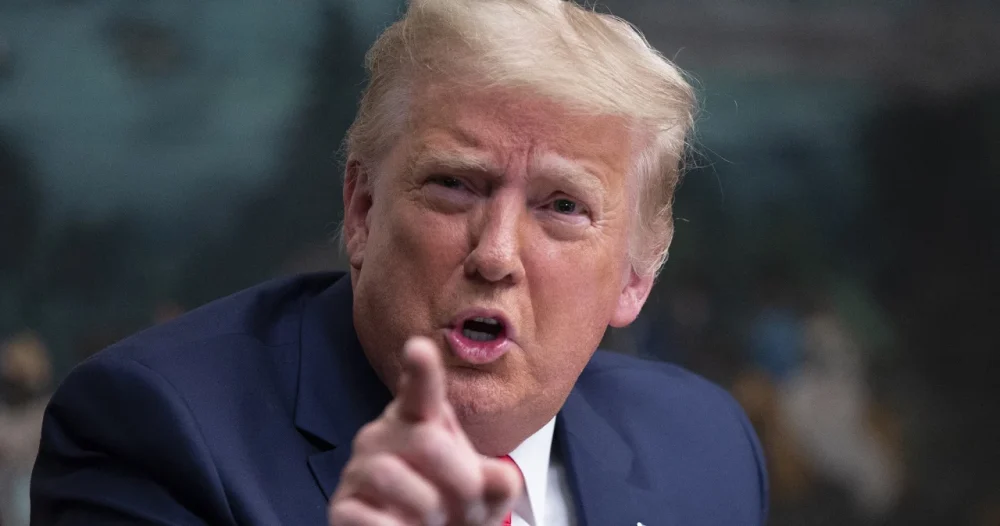U.S. President Donald Trump recently announced that Indonesia has become the third country to reach a trade agreement with the United States. This comes after the U.S. received assurances that Indonesia would significantly increase imports of American goods into its own market as well as throughout Southeast Asia — a move the U.S. found satisfactory.
All of this was in exchange for avoiding reciprocal tariffs, which President Trump had recently warned the Indonesian government about in an official letter — stating that the U.S. was prepared to impose tariffs as high as 32% on Indonesian imports.
As part of the deal, Indonesia pledged to purchase U.S. energy worth $15 billion (approximately 487.5 billion baht at an exchange rate of 32.50 baht/USD), U.S. agricultural products worth $4.5 billion (around 145 billion baht), and 50 Boeing 777 aircraft.
Trump’s threat also led Indonesia to reduce its import tariffs on U.S. goods to 0% in exchange for the U.S. agreeing to impose just a 19% tariff on Indonesian goods — a rate that will take effect starting August 1.
The other two countries that previously finalized trade deals with the U.S. were the United Kingdom and Vietnam. The U.K. secured a 10% tariff rate for its exports to the U.S., while the import tariff the U.K. applies to U.S. goods will be reduced from 5.1% to 1.8%.
As for Vietnam, the country offered to reduce its import tariffs on U.S. products to 0%, as the U.S. is Vietnam’s largest export market — accounting for about 36% of its total export value. In exchange, the U.S. agreed to a 20% tariff on Vietnamese goods. However, if goods originating from China are routed through Vietnam to enter the U.S., those products will be subject to a much higher tariff rate of up to 40%.
Thailand, which enjoys an annual trade surplus with the United States of around $40 billion — approximately 1.3 trillion baht — may be running out of time to negotiate with the U.S. If a deal cannot be reached in time, how should Thailand prepare itself for the potential economic shock?
Dr. Kirida Bhaopichitr, Director of International Economic Policy and Development Research, as well as Director of the Economic Intelligence Service at the Thailand Development Research Institute (TDRI), offered her perspective:
Thailand may not secure as favorable a deal or tariff rate as the countries that have already concluded successful negotiations. The country may have to accept whatever terms are offered.
Looking on the bright side, Thailand still has some opportunities left on the global stage. For example, it should push to conclude negotiations with other trading blocs, such as the European Union — a process that is currently underway and expected to be finalized by mid-next year.
One Thai product that has consistently competed in the global market is jewelry, valued for the craftsmanship of Thai artisans. The competition isn’t about price, but rather about the unique value it offers.
Another product Thailand produces on par with China is certain types of medical equipment, such as syringes. While China currently dominates this market with a 13% share, Thailand—holding just 0.3%—may have the opportunity to replace some of China’s share.
If we look carefully, there may be market gaps that Thailand can fill. There could be several Thai products that can be exported to other markets—or even to the U.S. market—as substitutes for products from countries affected by trade retaliation.
Dr. Kirida also commented that this trade war is like a single “cake” that everyone is scrambling to get a slice of, so it’s no surprise that every country is rushing in to grab a piece.
If we break down Thai exports to the U.S., there are two parts: direct exports, which account for 18% of total exports, and indirect exports, such as raw materials and components ordered by other countries to be assembled and then shipped to the U.S., accounting for another 6%.
Altogether, this means Thailand relies on the U.S. market for about 24% of its exports. But if we think about it, that also means there’s another 76% going to other markets—so don’t lose hope just yet.
In the period ahead, there’s still room for adaptation. Even though the trade war will likely slow global economic growth and weigh on Thai exports—since our trading partners will also be affected by these policies—we still have time to adjust.
t is expected that Thailand’s export growth will slow to just 1–2%, with the impact becoming more evident early next year, as U.S. importers have already stocked up their inventories this year.
Nonetheless, Thailand must make greater efforts to establish Free Trade Agreements (FTAs) with more countries to create new pathways for export products. Negotiations with the European Union (EU) are expected to conclude with a signing next year, which would allow Thailand to increase exports to the EU. Additionally, if Thailand can initiate negotiations with the Middle East, it could open up significant new markets there.
As for the question of whether Thailand can offer the U.S. zero import tariffs—similar to what Vietnam has done—the answer is no. Thailand cannot do that due to the large number of people involved in the agricultural sector. For example, agricultural products such as corn and soybeans are not produced in sufficient quantities domestically, so the U.S. may be allowed to increase imports of these items for use in animal feed production. Even wine imports from the U.S. might be permitted.
As mentioned earlier, the U.S. accounts for 36% of Vietnam’s total exports. Therefore, Vietnam is willing to forgo other markets in favor of the U.S. What’s crucial is that the Vietnamese government has the authority to mandate what should or should not be produced in order to maximize national benefit—something that Thailand cannot do.
Nevertheless, the difference in tariff rates between Thailand and Vietnam presents a risk that businesses may choose to relocate production to Vietnam—for instance, in the manufacturing of electrical appliances and electronic components—because the tariffs on U.S. imports from Vietnam are lower.
Even so, some international investors do not consider tariffs alone. They also weigh geopolitical factors. In this regard, Thailand’s neutral and friendly stance toward all parties gives it a strategic advantage.
Dr. Kirida also sees that Thailand has many types of products whose producers do not focus on the U.S. market, but instead target other groups of countries—particularly in areas where Thailand has strong capabilities, such as the bio-products industry, including food, vitamins, ingredients, and cosmetics.
There is still hope for Thailand in sectors that require highly skilled labor, products that rely on design, craftsmanship, and creativity, as well as processed foods and dietary supplements.
In fact, the Office of the United States Trade Representative (USTR) has stated its desire for countries to engage in fair trade with the U.S. by reducing tariffs, increasing import quotas, and adjusting import standards for certain U.S. products. This position has already been communicated to 60 countries through official documents.
One of the key things the U.S. wants from Thailand is the ability to export pork and pork offal into the Thai market—something that has long been restricted due to Thailand’s food safety standards, especially concerning the use of “ractopamine,” a feed additive banned in Thailand. The U.S. has repeatedly requested that Thailand ease this standard, and the question now is whether such a change is realistically feasible.
“Don’t forget the defensive game,” she said. As high U.S. import tariffs push goods away from the U.S. market, many countries are looking for alternative export destinations. This could lead to a flood of imported goods into Thailand, especially in sectors where Thai consumers and businesses have demand. Products such as steel, petrochemicals, plastics, and textiles are particularly at risk of being dumped into the Thai market, as these sectors are among the hardest hit globally.
However, she believes Thailand is unlikely to raise its own import tariffs, as doing so could provoke retaliatory tariffs from other countries and open up multiple fronts in trade disputes.
n fact, Thai businesses can still benefit from the import of cheaper components, raw materials, machinery, and equipment compared to before—using them to add value in industrial production and the services sector.
It is essential for the government to prioritize domestic consumer interests while also providing support and relief for farmers and industries, particularly Thai SMEs, that are struggling to adapt in order to remain competitive. At the same time, the government should help identify new markets or foster new business partnerships with foreign companies that are looking to expand their investments in Thailand.
According to Dr. Kirida’s assessment, by August 1st, Thailand is unlikely to escape retaliatory tariffs or trade barriers from the U.S., possibly at a rate of 36%. In the initial phase, Thai people may face economic hardship, and the country’s economic growth could slow to just 1% over the next 2 to 3 years. However, in the end, scarcity and difficulty may lead to greater resilience for Thailand. Meanwhile, the U.S. may gradually reduce its high tariffs, especially as Thailand holds strategic advantages in terms of geographic positioning.

